
Top 7 Enterprise Feedback Management Software & Tools
In today's hyper-competitive business landscape, understanding and acting upon customer feedback is more critical than ever. However, with customers interacting across multiple touchpoints and leaving feedback through various channels, managing this feedback can feel insurmountable.
This is where Enterprise Feedback Management (EFM) software steps in. By consolidating and streamlining the feedback process, EFM software empowers businesses to truly listen to their customers, drive improvements based on insights, and ultimately enhance their overall customer experience.
Whether you're a small business looking to get started with feedback management or a large corporation aiming to enhance your existing processes, our list of top 7 Enterprise Feedback Management software and tools will help you find the right solution. So, let's get started!
What is Enterprise Feedback Management Software?
Enterprise Feedback Management (EFM) software is a tool that helps businesses collect feedback via multiple channels such as email, widgets, support tickets, etc, and analyze and manage customer feedback at one centralized repository. The main aim of EFM software is to use this feedback to improve customer satisfaction, loyalty, and, ultimately, business performance.
EFM software enables companies to collect and manage customer feedback, collate responses from feedback surveys, analyze and prioritize feedback, and derive meaningful insights. These insights can improve products, address backlogs, and enhance customer experience.
Key features of Enterprise Feedback Management software include:
1. Survey Management: EFM software allows businesses to create and manage various types of surveys, like customer satisfaction(CSAT), Net Promoter Score (NPS), and customer effort score (CES) surveys.
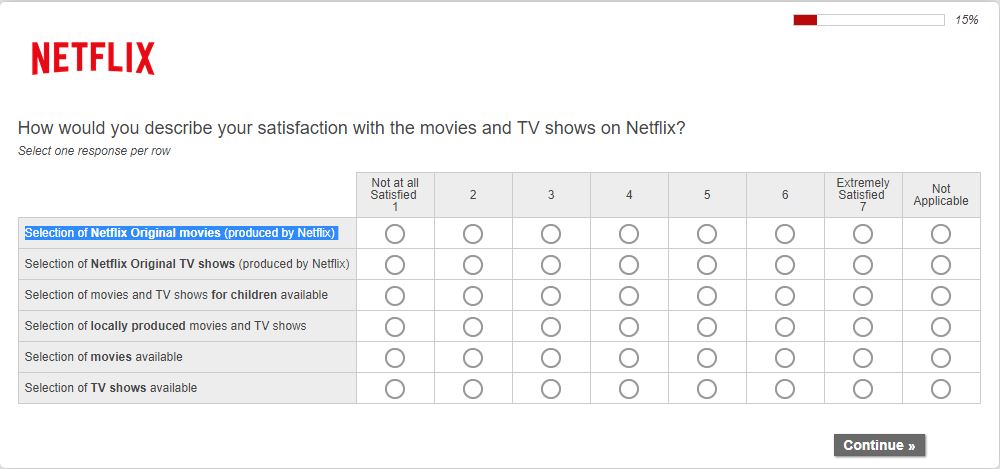
2. Data Collection and Aggregation: EFM tools collect user feedback data and aggregate responses from multiple channels into a unified feedback repository. This makes it easier to understand and analyze the feedback to support decision-making.
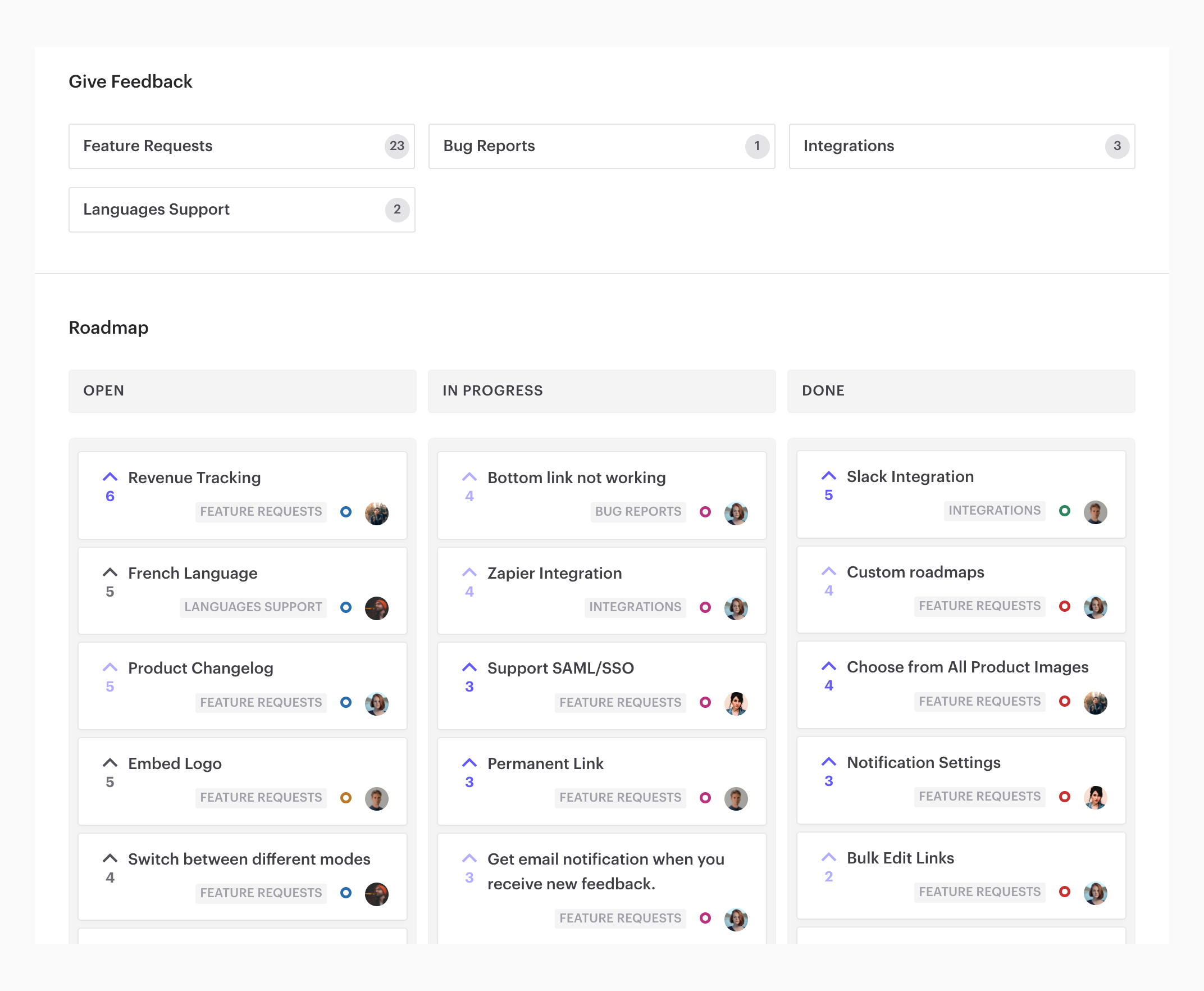
3. Analysis and Reporting: Advanced EFM systems offer robust data analysis features, including filtering, cross-tabulation, and sentiment analysis. They generate reports and dashboards that visualize the feedback, making it easier to understand and interpret.
4. Action Management: Once the feedback data is analyzed, the software helps decide the actions based on the insights. This could include updating status, setting and assigning tasks in Jira, creating workflows, and tracking progress toward resolution with a product roadmap.
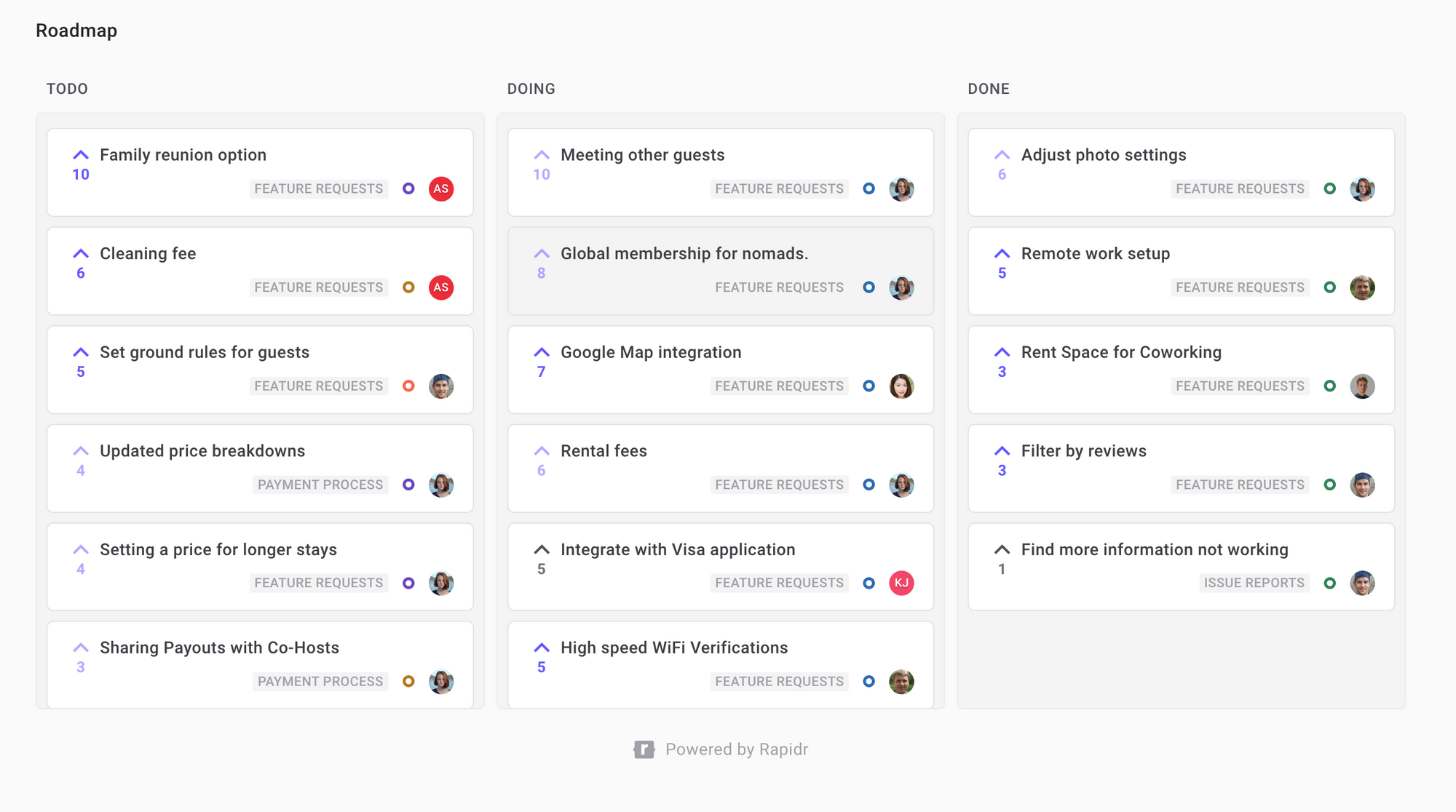
5. Integration: EFM software often integrates with other business systems, such as Customer Relationship Management (CRM) systems, marketing automation platforms, and customer support tools like Intercom, Hubspot, Jira, etc. This allows for a more comprehensive view of the customer and facilitates information sharing across departments.
Enterprise Feedback Management software provides a systematic approach to managing and utilizing customer feedback to drive business improvements.
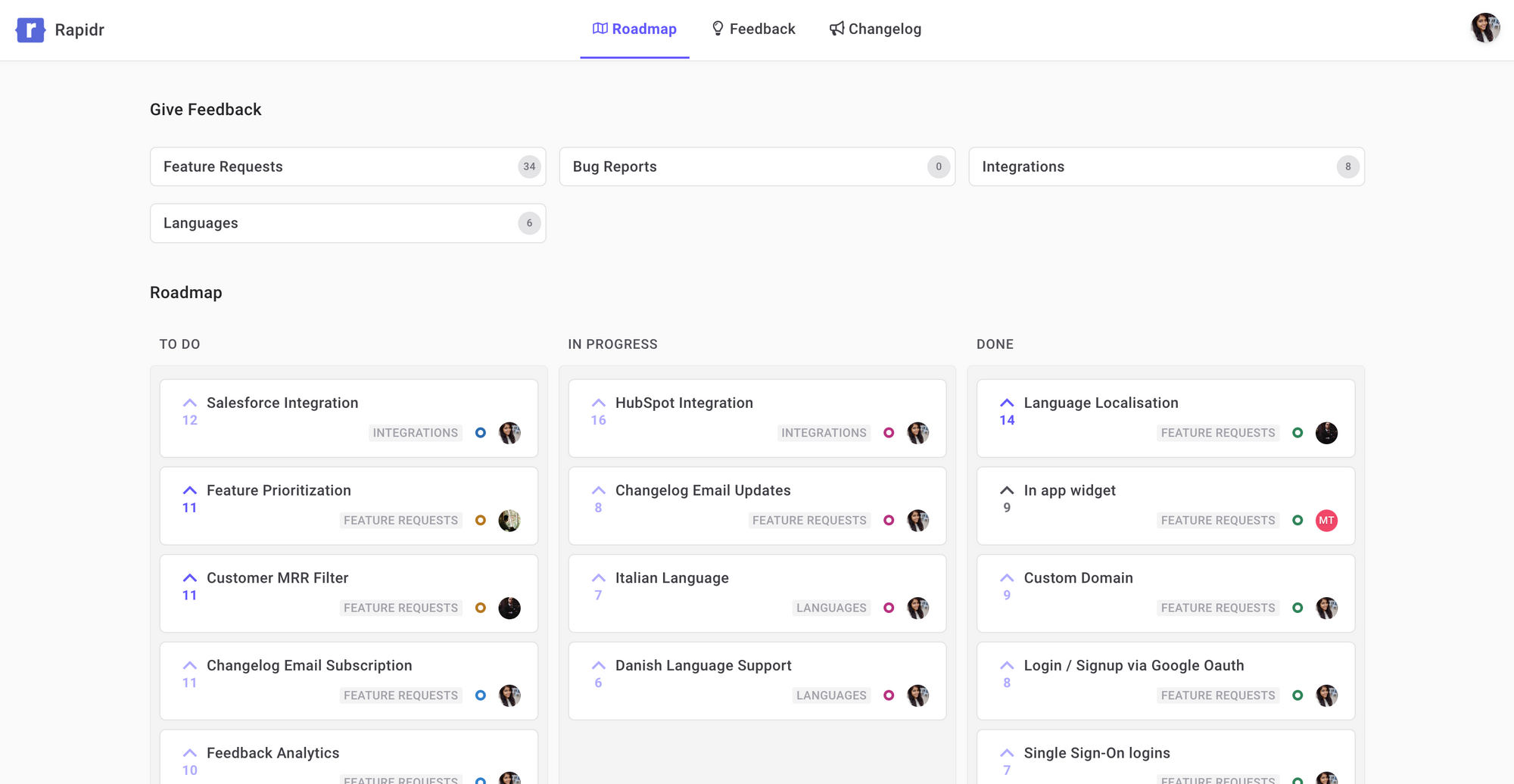
What are the benefits of using EFM Software?
Enterprise Feedback Management (EFM) software can benefit an organization looking to enhance customer experience and drive business growth. Here are some of the key benefits:
1. Centralized Feedback Management: EFM software collects and aggregates feedback from channels such as Spreadsheets, Slack, Hubspot, and Intercom into a single platform. This centralization allows for more efficient management and analysis of customer feedback, eliminating the need to collect and combine data from different sources manually.
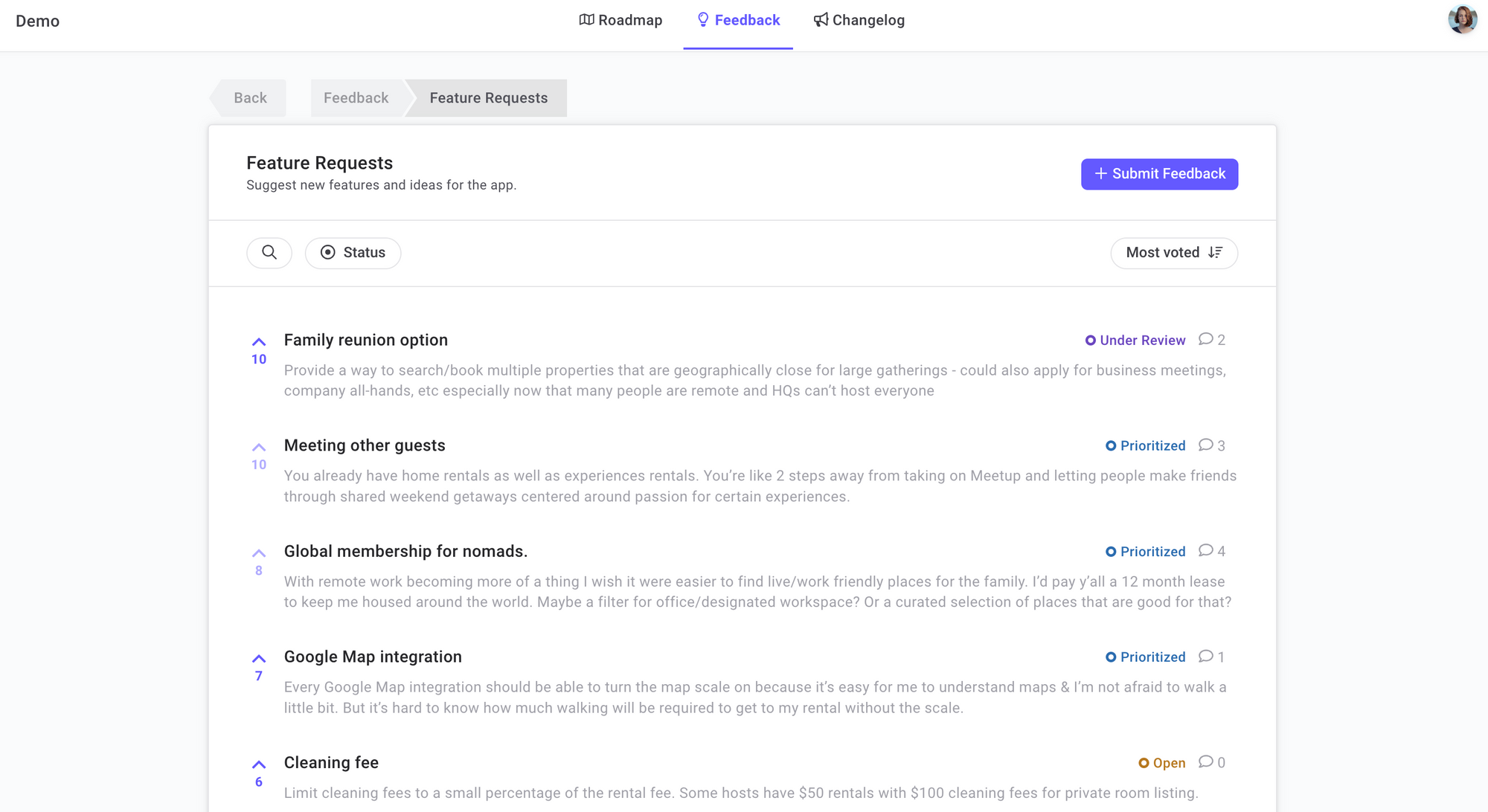
2. Enhanced Customer Insights: By capturing and analyzing feedback from multiple touchpoints along the customer journey, businesses gain a more comprehensive understanding of their customer's experiences and perceptions. This holistic view can help identify areas of strength and weakness and reveal opportunities for improvement and product development.
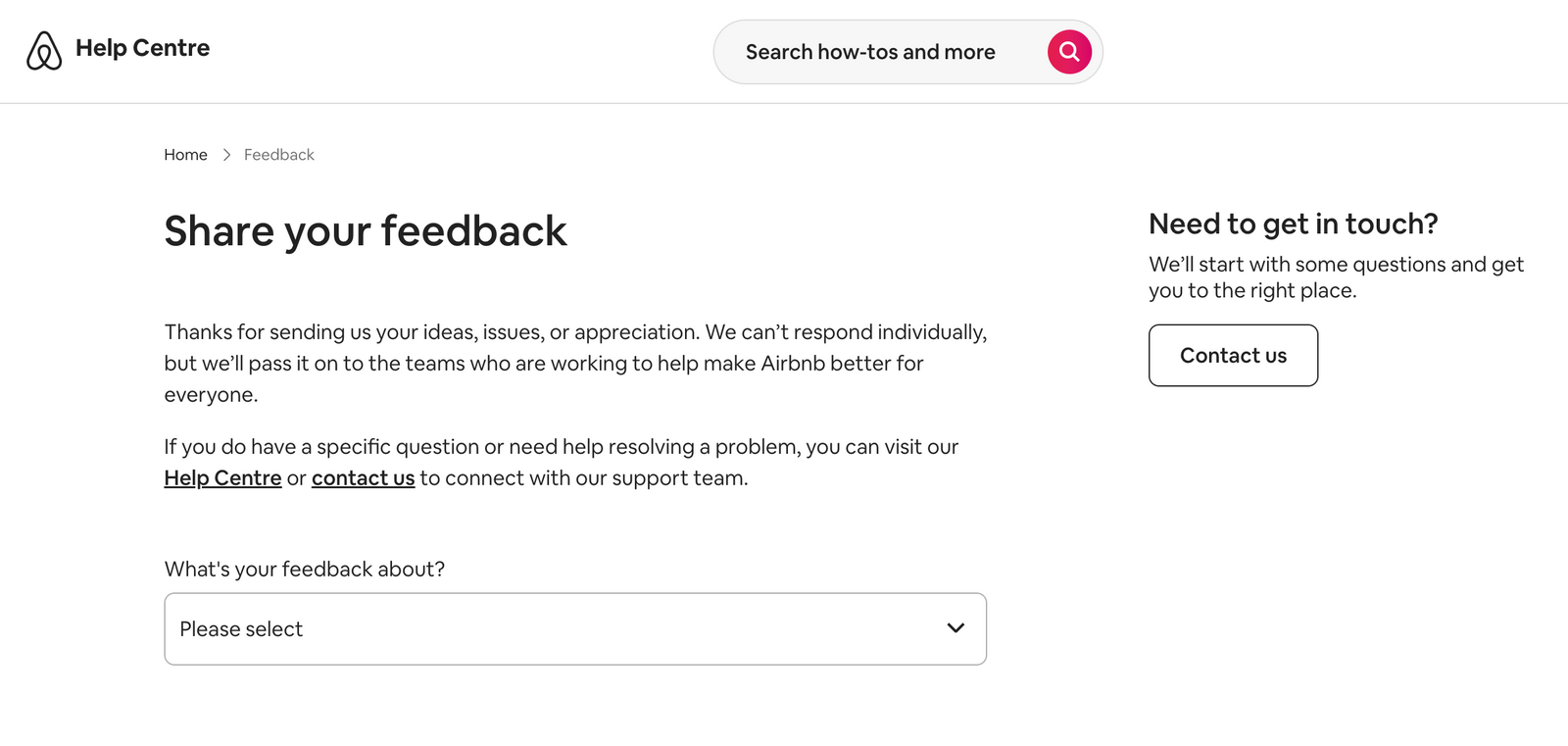
3. Improved Decision-Making: The analytical capabilities of EFM software can generate actionable insights that inform strategic and tactical business decisions and achieve product-market fit. Whether identifying trends, spotting issues, or understanding customer preferences, this data-driven approach leads to more informed, effective decision-making.
6. Timely Response to Feedback: EFM systems can alert businesses to critical feedback in real-time, enabling swift resolution of issues and preventing minor problems from escalating. This quick response can enhance customer satisfaction and loyalty, even with negative feedback.
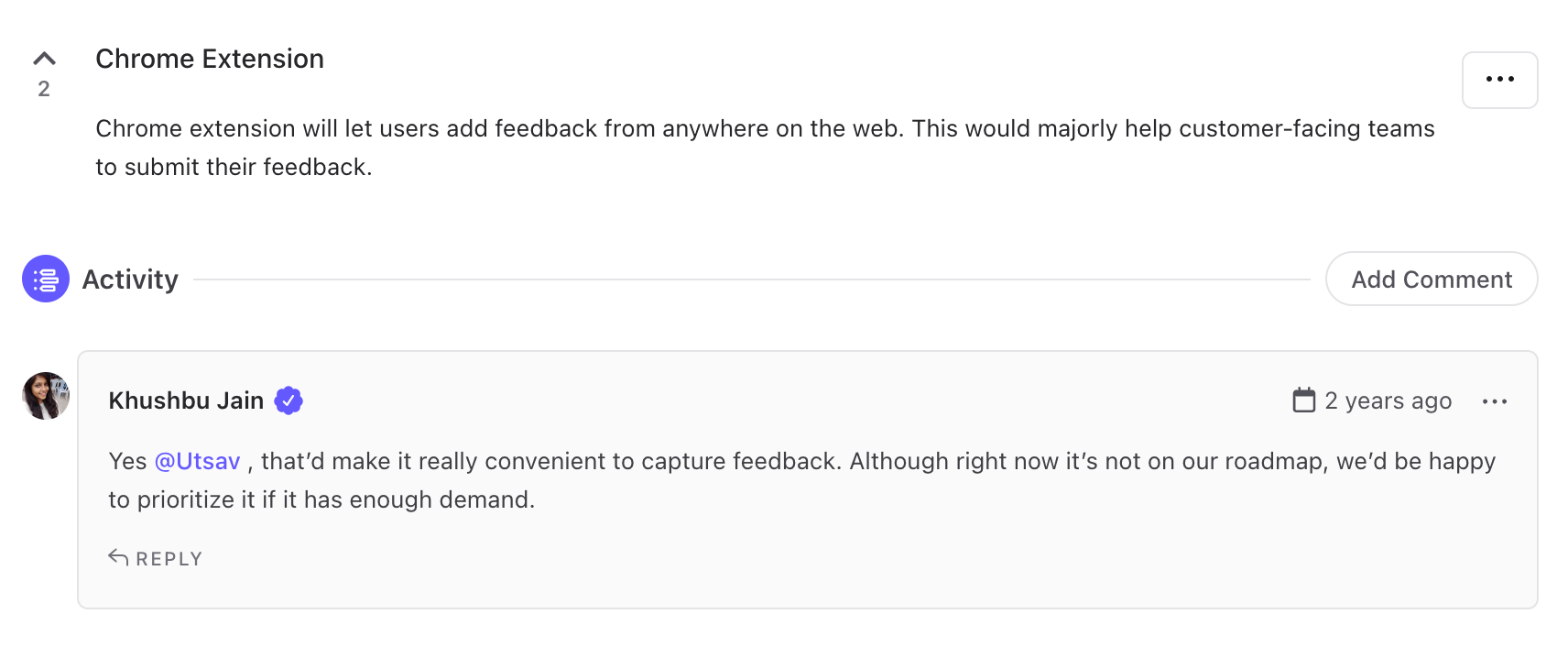
4. Increased Customer Retention: Businesses show customers that their opinions are valued by regularly soliciting and responding to feedback. This can increase customer satisfaction, loyalty, and retention, as customers are likelier to stick with companies that take their feedback seriously.
5. Business Growth: By continuously improving the customer experience based on feedback, businesses can enhance their reputation, attract customers, and drive product adoption and growth. Additionally, satisfied customers are more likely to become brand advocates, providing positive word-of-mouth marketing.
6. Improved Internal Processes: Feedback isn't just valuable for understanding customers; it's also beneficial for identifying inefficiencies and areas for improvement within internal business processes.
Be open to feedback and communicate openly, making your team members feel like they’re part of the project. - Joel Montvelisky
Insights gleaned from EFM can lead to process optimization, boosting productivity and performance and improving cross-functional coordination between customer-facing and product teams.
7. Benchmarking Performance: EFM tools often provide features that allow businesses to measure their performance against industry standards or competitors. This can help identify areas where the company excels or needs improvement, driving continuous progress and product sales.
8. Integration with Other Systems: EFM software can often be integrated with other systems like CRM or ERP, creating a holistic system that centralizes customer data, simplifies access to information, and facilitates data-driven decisions across the organization.
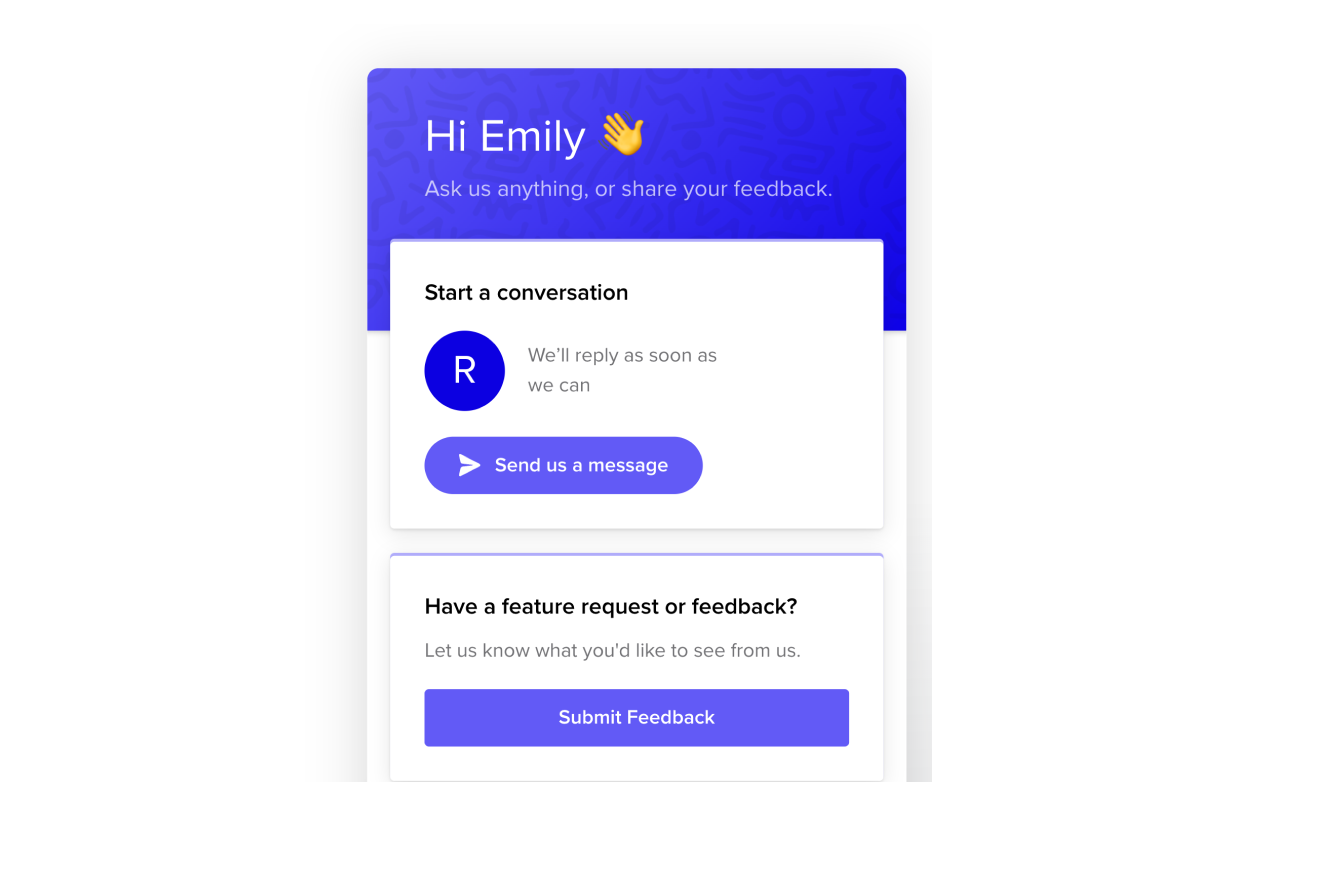
Remember, the effectiveness of EFM software hinges on an organization's commitment to listen to feedback and act on it genuinely. The tool alone won't improve customer experience; it requires a customer-centric mindset and strategy.
What are the challenges enterprises face while collecting and managing user feedback?
Collecting and managing feedback in an enterprise setting comes with several challenges. Here are some of the most common ones:
1. Collecting Feedback Across Multiple Channels: Customers interact with businesses across multiple channels - email, social media, website feedback, customer support, in-store, etc. Collecting feedback from all these sources and consolidating it in one place is daunting.
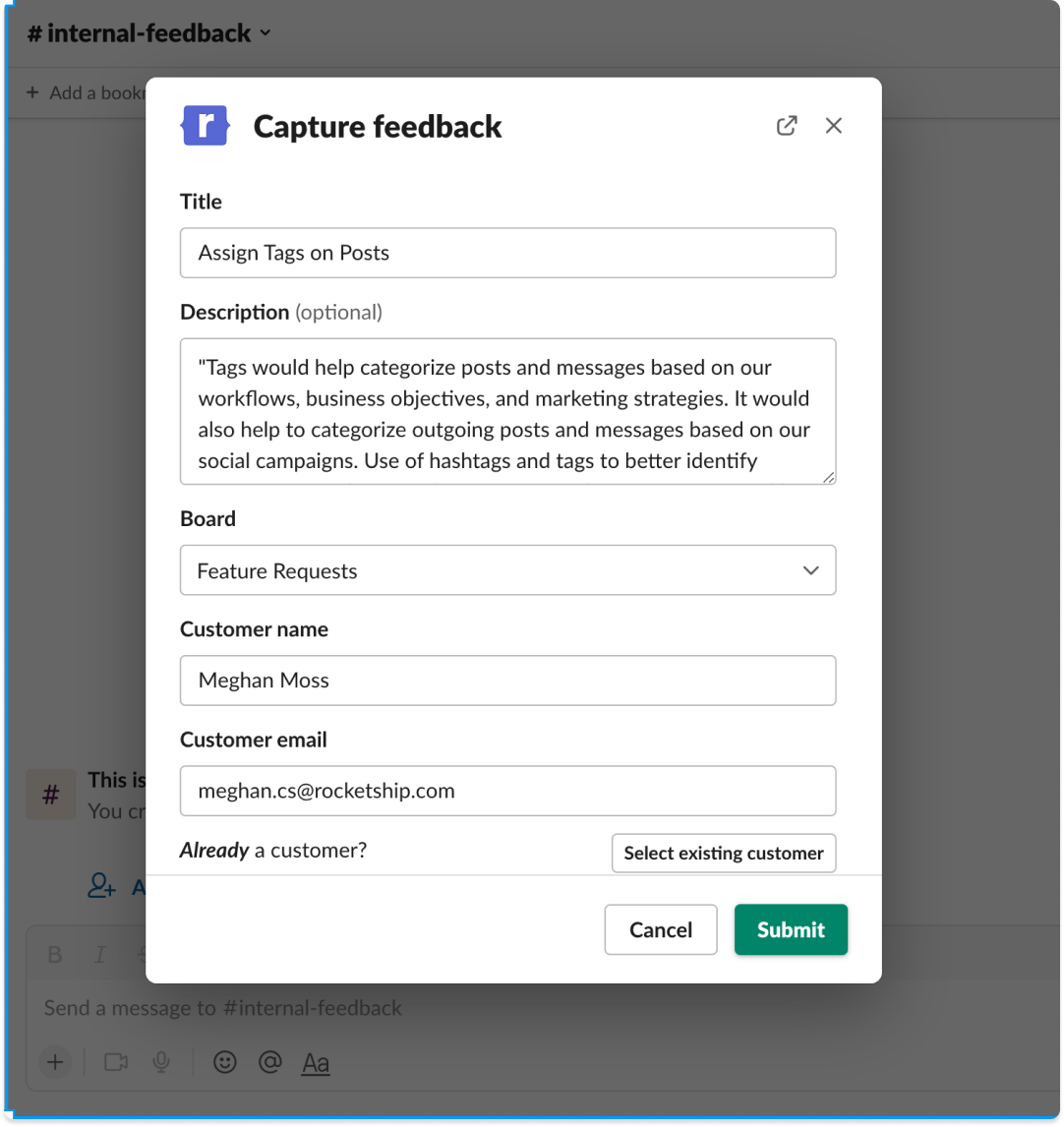
2. Volume of Feedback: Larger enterprises often serve thousands, if not millions, of customers, which can result in a massive amount of feedback. Sorting through and analyzing such a large volume of feedback can be overwhelming and time-consuming.
3. Quality and Relevance of Feedback: Not all feedback is equally helpful. Some may be irrelevant, poorly articulated, or not constructive. Discerning valuable insights from less helpful feedback can be challenging without a feedback management tool.
4. Actionability: Even after collecting and analyzing feedback, the real challenge is turning insights into actionable steps. Deciding what to prioritize and determining the best action can be difficult, especially when feedback points in different directions.
5. Feedback Response Time: Customers expect their feedback to be acknowledged quickly. With a high volume of different types of feedback, promptly responding and updating users is challenging without a system.
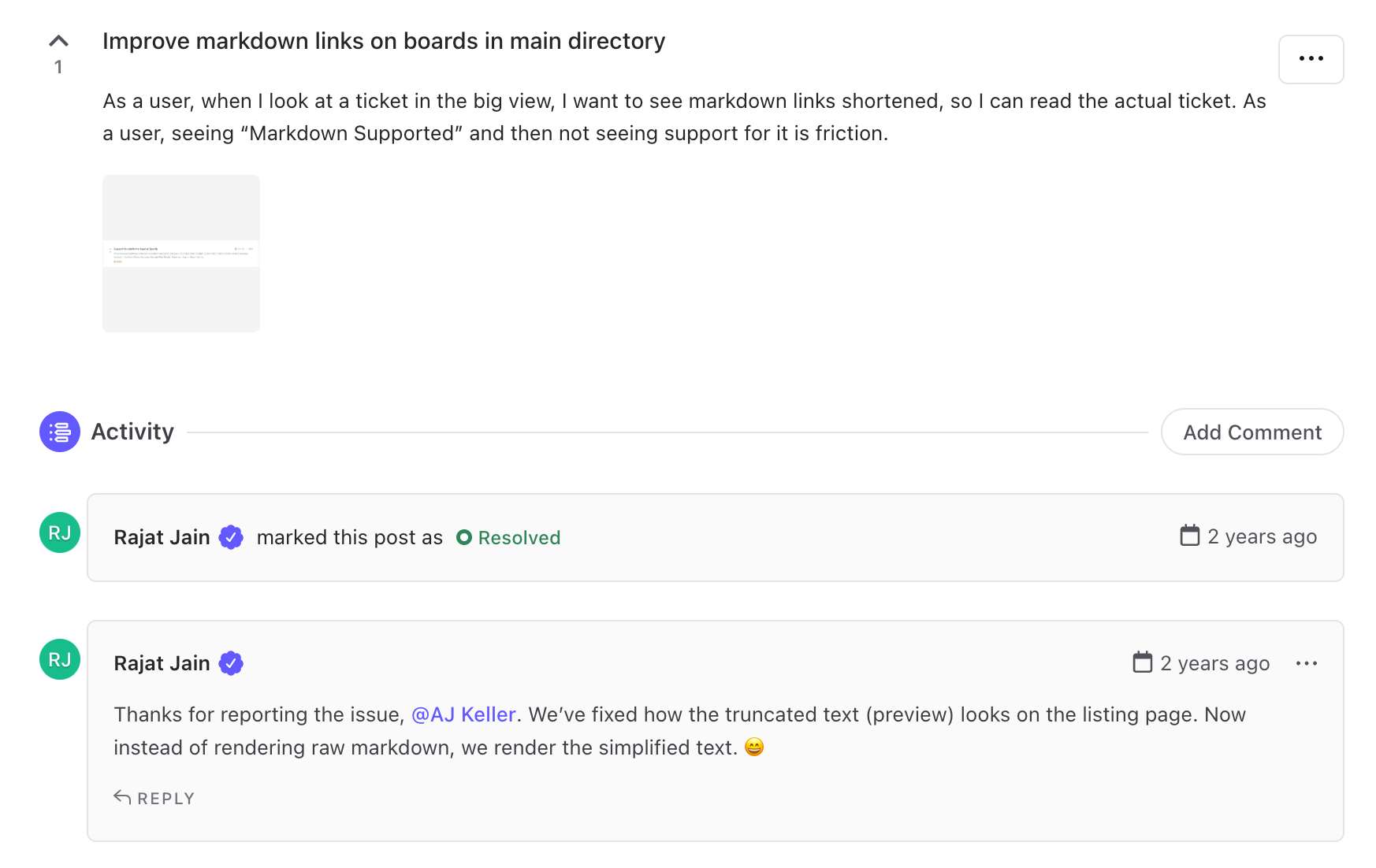
6. Privacy and Compliance: Collecting and handling customer feedback involves dealing with sensitive customer data. Enterprises must navigate privacy laws, like GDPR or CCPA, which can complicate the feedback collection and management process.
7. Internal Silos: Various organizational departments often need to share and act upon feedback together. However, silos between customer-facing and product teams can hinder effective communication and collaboration to address user feedback and internal employee feedback.
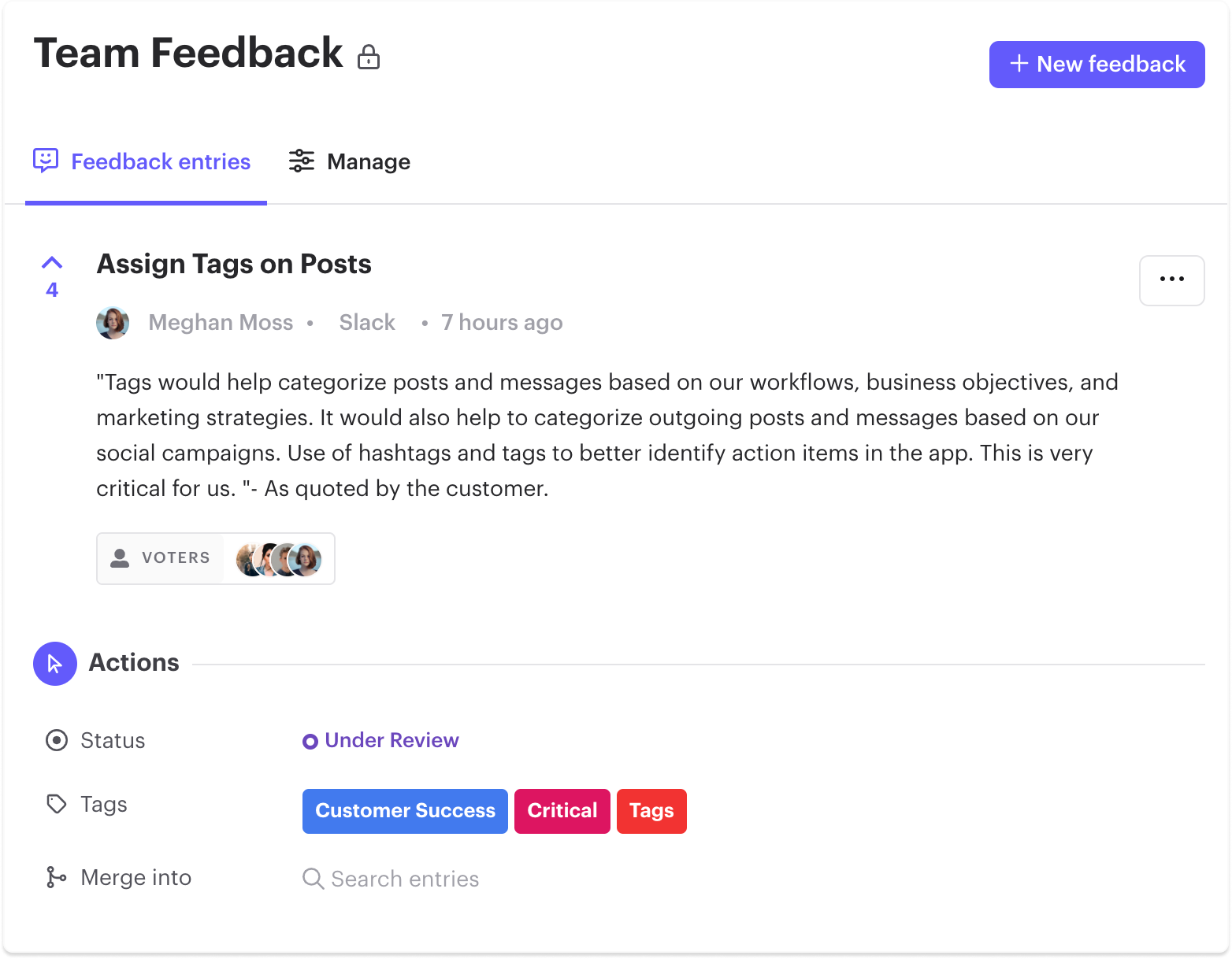
8. Cultural Resistance: Some organizations may resist acting on feedback, particularly if it suggests a need for significant changes or if it conflicts with existing beliefs or priorities.
To overcome these challenges, many enterprises turn to Enterprise Feedback Management (EFM) software, which can help centralize and streamline feedback collection, improve the quality of insights, and speed up the response time. However, successfully managing feedback also requires a commitment to a customer-focused culture, transparent communication across departments, and effective strategies to prioritize and act on feedback.
Top 7 Enterprise Feedback Management Software & Tools
Each tool has strengths and may be better suited for different types of organizations or specific use cases. When choosing an EFM tool, consider factors such as your organization's size, your specific feedback needs, the tool's integration capabilities, and your budget.
Here are the top 7 most popular and highly-rated Enterprise Feedback Management (EFM) software tools.
- Rapidr
- UserVoice
- Mopinion
- Qualtrics
- Hotjar
- Qualaroo
- SurveyMonkey
1. Rapidr
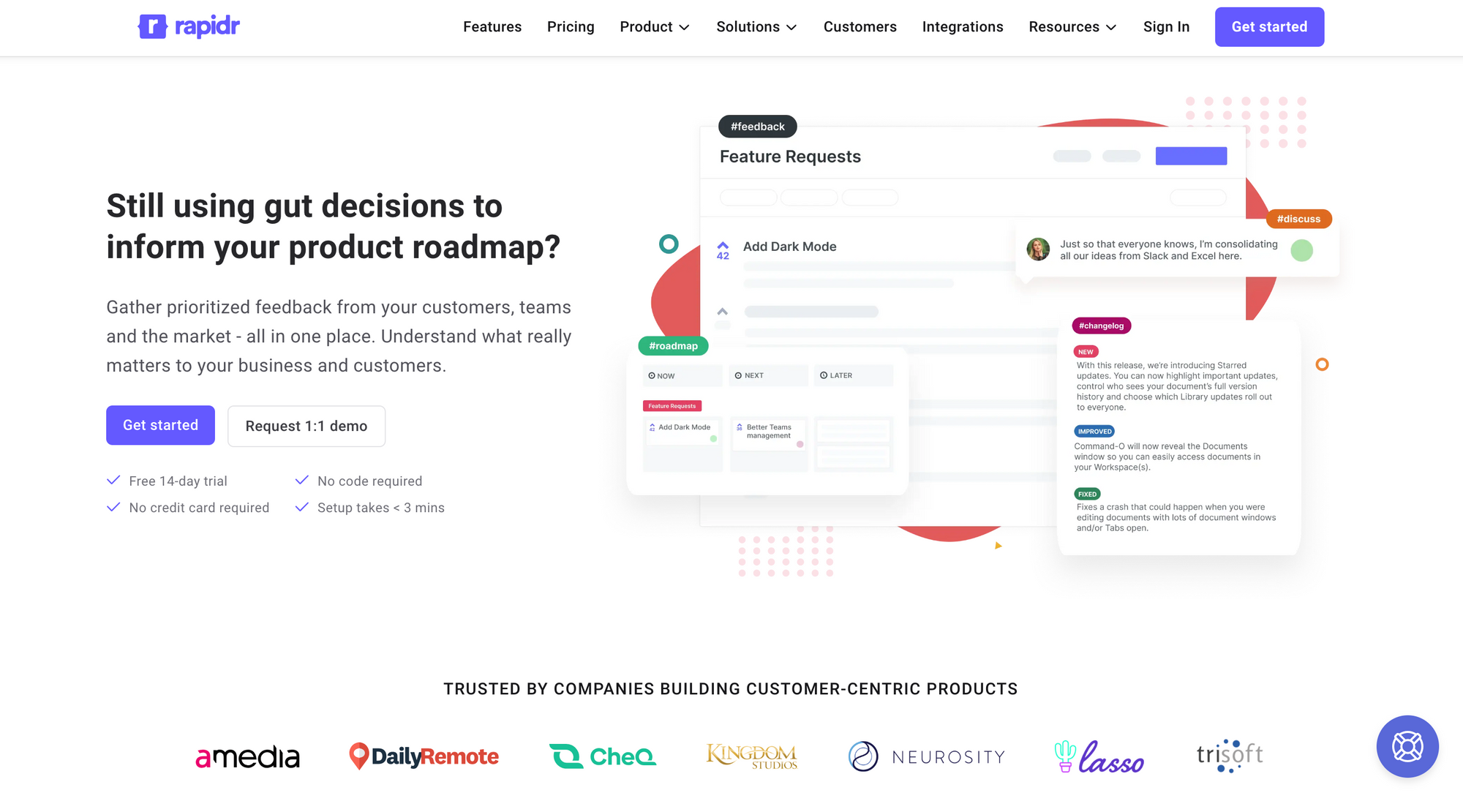
Rapidr is an enterprise feedback management software and feature tracking tool that helps manage the entire feedback lifecycle, from capturing feature requests to prioritizing features, informing product roadmap, and sharing product updates with changelog.
Rapidr allows you to capture and track all user feedback and organize and analyze them under one roof in a centralized location. Then, inform your roadmap with the most critical feedback, and notify users of what's new with release notes.
Pricing: Starts at $49/month.
Use case: Best for feature request tracking, idea management, feature voting, roadmapping, and product changelog.
Pros of Rapidr
- Rapidr is an end-to-end enterprise feedback management solution, so you don't have to glue multiple apps together. With it, you get a customer feedback management tool, feature request collection software, road mapping software, and release notes software.
- Rapidr is one of the most modern and cost-effective solutions that offer excellent value for money stacked against the other enterprise options on this list. Rapidr's pricing is based on the weight you derive from the software instead of per-seat pricing.
- Rapidr can be fully white-labeled on high-end plans. White-labeling removes the "Powered by Rapidr" link from your feedback portal and emails, which means no visible branding from Rapidr.
- Rapidr is built to support varying workflows and to match different product development terminology across companies. It's built to be customizable from day one.
- Rapidr supports major integrations such as HubSpot, Jira, Intercom, Slack, SAML SSO, etc., and many more at the time of writing to collect and manage customer feedback.
Cons of Rapidr
- Rapidr is relatively new in the market, and many features are still being built and tracked on their public feedback board. But with features rivaling other options at a much lower price and in the hands of trusted people, it's an excellent option for anyone looking for a lean, simple, and clean customer feedback management tool.
2. UserVoice
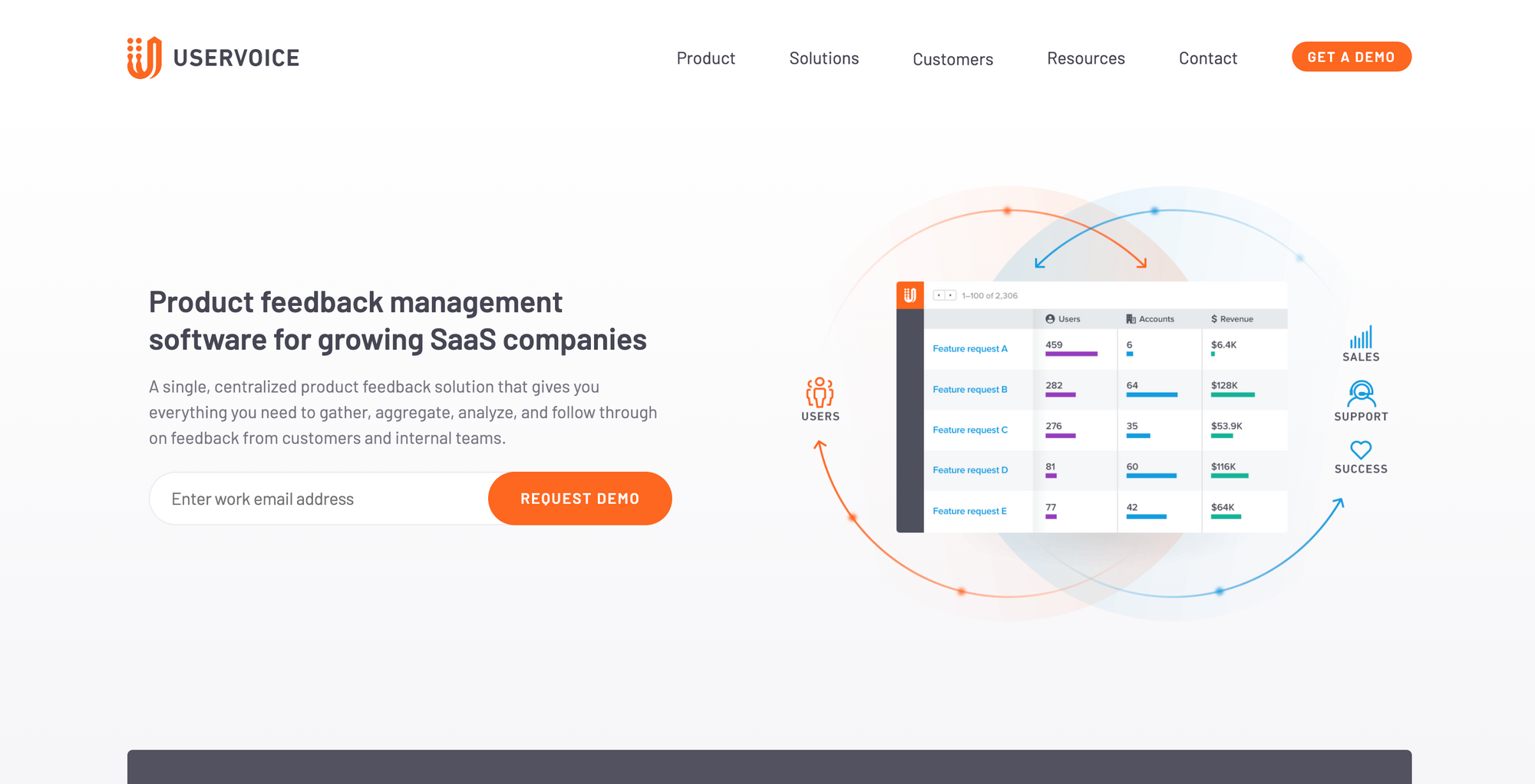
UserVoice caters to enterprise companies that want to gather customer feedback, process support requests, and increase customer satisfaction. UserVoice allows companies to create feature request voting boards for customers to share their ideas, opinions, and votes.
Pricing: It starts at a whopping $799/ user /month with an annual agreement billed quarterly, but you'd have to contact their sales team to get a quote.
Use case: Best for product feedback management.
Features of UserVoice
- UserVoice gathers data from its customer base, analyzes it, and then presents it to them to make informed decisions about what should be improved or changed.
- UserVoice creates a feedback loop by providing feedback forum software enabled with roadmap functionality.
- UserVoice has streamlined communication with customer-facing and product teams and keeps all product feedback in one location to increase transparency.
- They allow product teams to see how many customers requested a particular feature and its importance to their business goals. They allow segmentation and create cohorts for different types of users.
- UserVoice has an outdated user interface. It’s hard to navigate and has a steep learning curve compared to its alternatives.
- UserVoice pricing starts at a whopping $799/ user /month with an annual agreement billed quarterly.
3. Mopinion
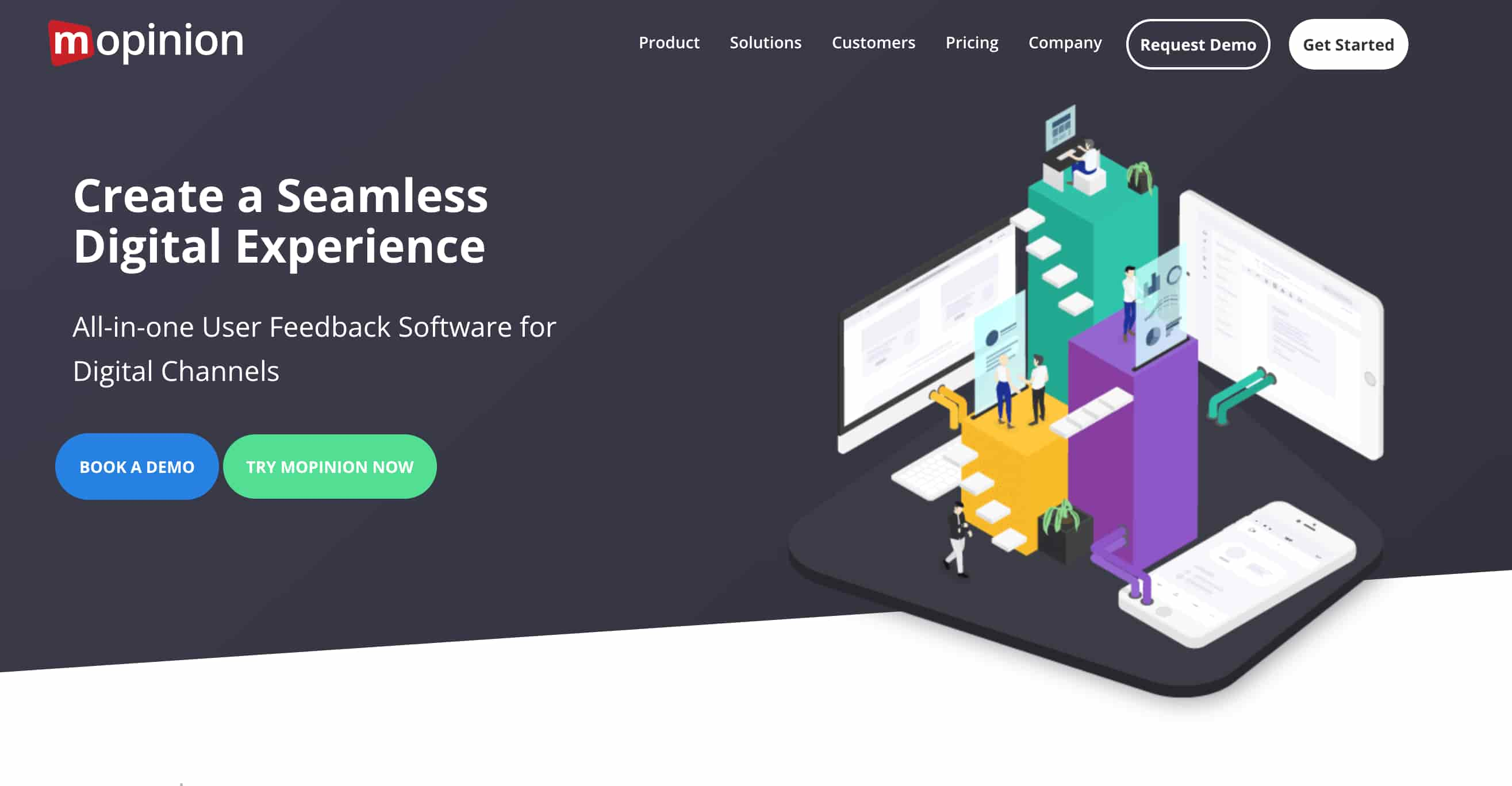
Mopinion empowers its users to create customizable online feedback forms, including various CX metrics such as NPS, CES, and CSAT, and trigger them based on rules such as mouse movement, exit intent, etc.
It also includes visualization in customizable dashboards and text analysis and labels. Users can use proactive alerts and role-based views to act upon feedback.
Pricing: Starting at $229/month.
Use Case: User feedback forms, NPS, and CSAT forms.
Features of Mopinion
- It allows you to create, design, and configure feedback forms and embed them directly into the site.
- It also offers reporting, analytics, and sentiment analysis to gauge customer sentiment.
- Mopinion also helps you collect and organize customer feedback across multiple channels, including in-app feedback.
- It also supports customer segmentation to target selected customer demographics like Rapidr but doesn't support feature request voting boards like Rapidr.
- Being expensive, it is unsuitable for startups and small businesses compared to its alternatives.
4. Qualtrics
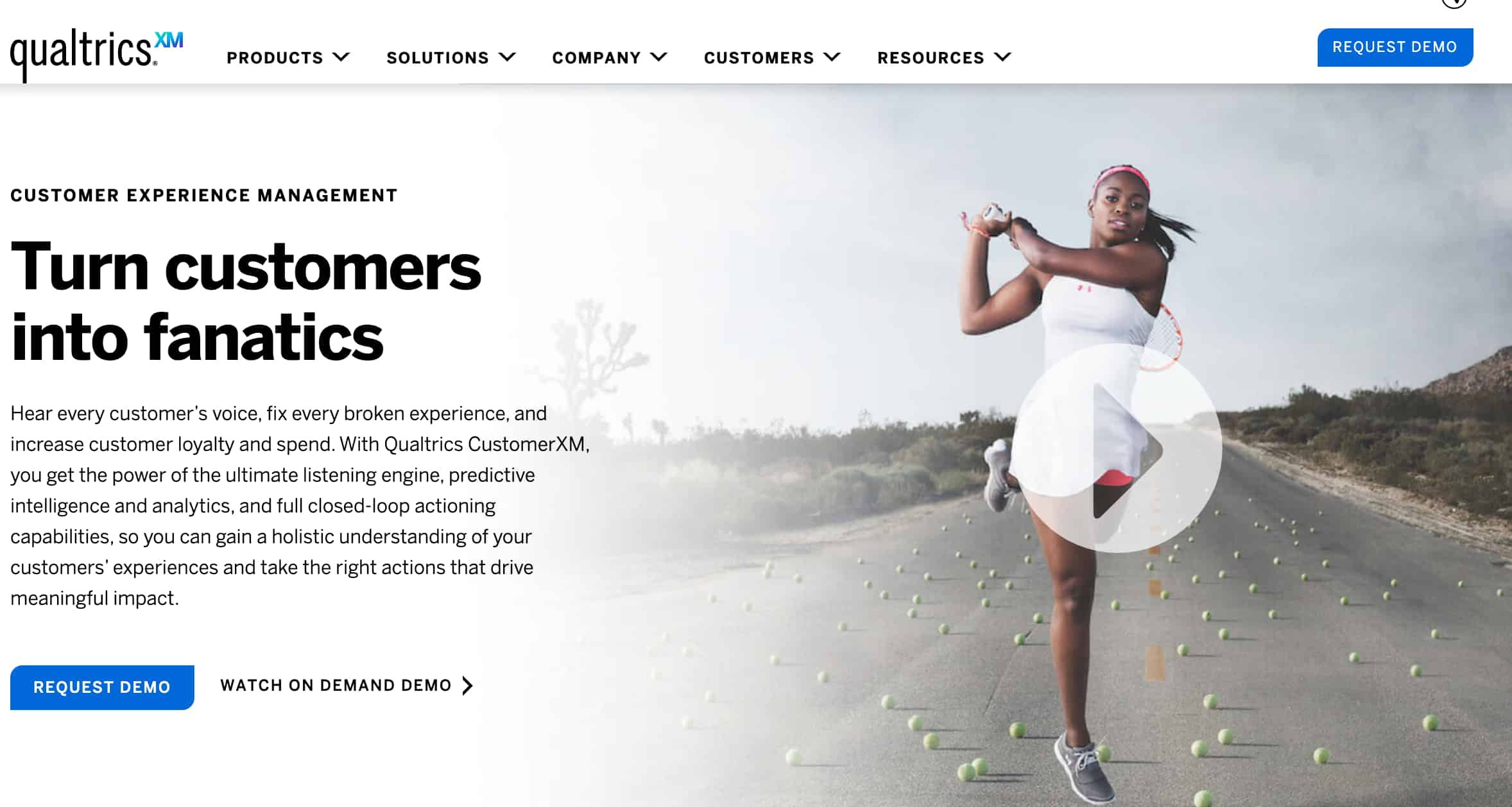
Qualtrics is an online survey and questionnaire tool offering nearly many question types and templates. Qualtrics helps understand customers at every meaningful moment and take actions that deliver breakthrough experiences with feedback surveys.
Qualtrics Pricing: Custom Pricing
Use case: Online surveys.
Features of Qualtrics
- Creating a survey is quick and easy, and the interface is user-friendly and easy to navigate.
- It supports pre-built survey templates with several question types to design surveys.
- Supports predictive analysis, reporting, and crosstab functionality.
- It is helpful for a Customer satisfaction survey, Event feedback, Pricing research, and Brand awareness.
- Adding customization or more complex logic could also be challenging if you don't know any scripting languages.
- Customers dislike that the software's price is increasing daily and is significantly overpriced compared to its alternatives.
5. Hotjar
Hotjar is an analytics tool for viewing pages and recording user sessions. It offers analysis and feedback, including heatmaps, form analytics, and visitor recording. With these analysis tools, companies can monitor and measure user behavior. In addition, Hotjar provides visual representations of website visitors and their usage behavior.
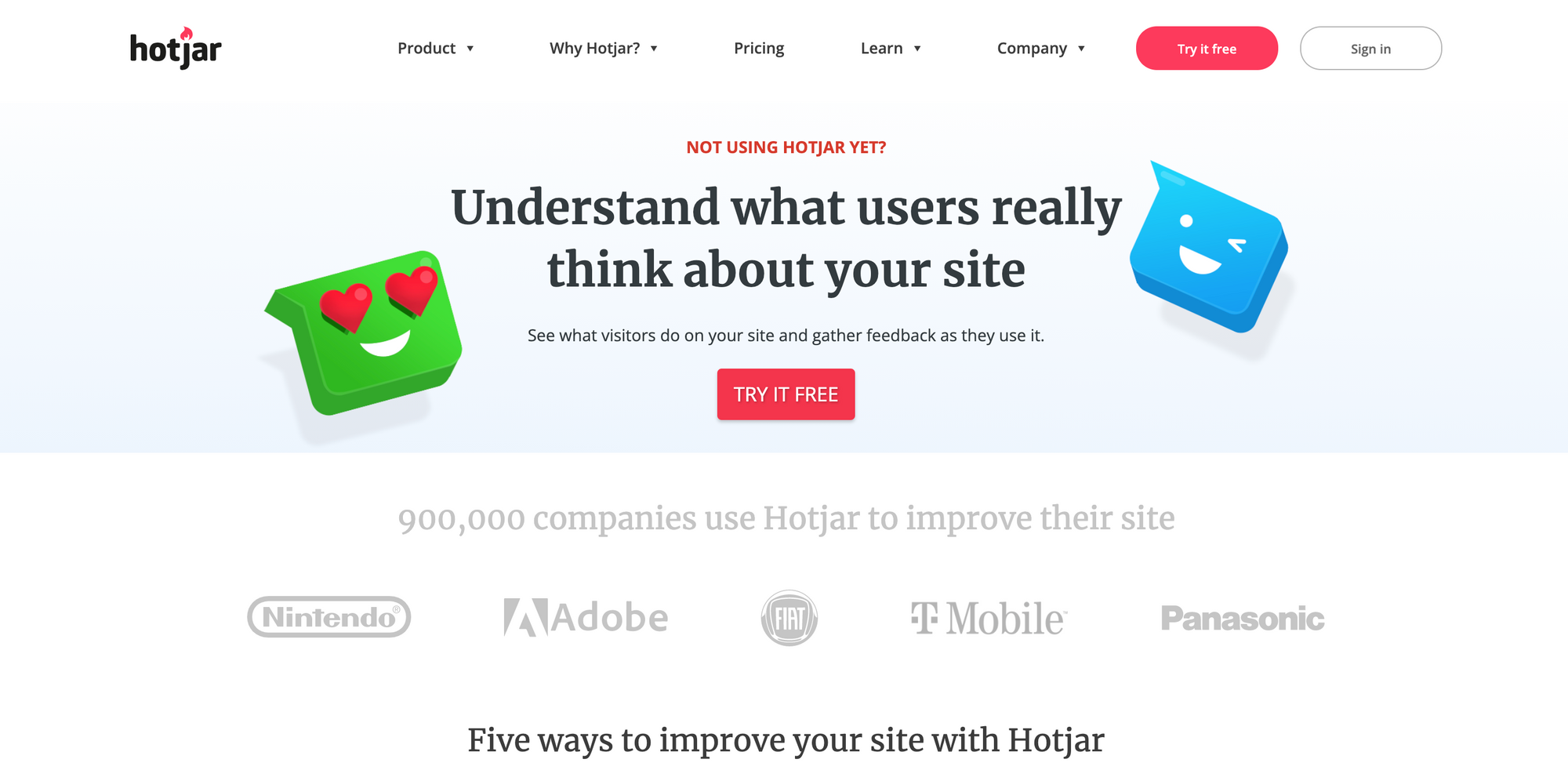
Pricing
Starts at $39/month.
Use Cases
Best for user behavior visualizations and tracking, website feedback.
Features of Hotjar
- Hotjar has a user-friendly user interface. It's lightweight and straightforward to use, doesn't go overboard with complicated functionality, and is plenty robust to provide critical insights.
- Hotjar helps you track customer journeys on your website to improve your customers' onsite experiences and engagements. Hotjar gives its data as visual representations called heatmaps.
- They add a tab or widget on your website where users can click to leave comments. This gives people a way out if they face problems and provide feedback.
- Hotjar's key selling point is packing analysis and feedback in one platform. Understanding your users enables you to ask for their feedback instead of doing guesswork directly.
6. Qualaroo
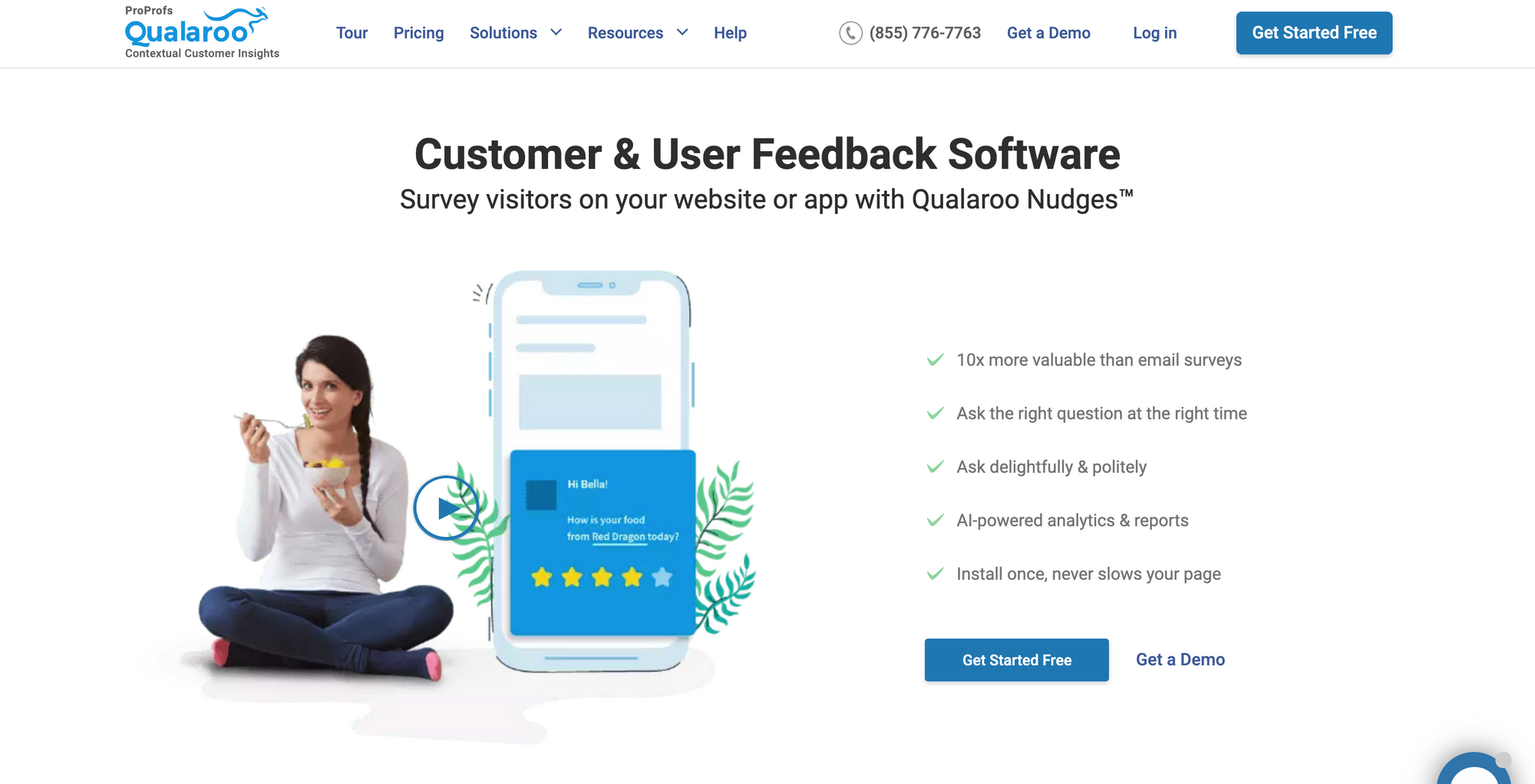
Qualaroo is a survey feedback platform that helps to gain qualitative insights through website surveys. Its key features include sentiment analysis, cookie targeting, data streaming, custom properties, and responses.
Pricing: starts at $100 per month.
Use Case: Best for website and UX feedback and surveys.
Features of Qualaroo
- The platform provides a proprietary insight capture tool that helps you ask the right questions at the right time so that you don’t have to create in-app, link, or web surveys from scratch whenever you want to collect customer feedback.
- Qualaroo helps users engage with customers based on their actions on the website and segment customers based on geographies.
- It also allows personalization by adding skip logic and templates to create surveys and open-ended feedback questions to gather free-form feedback.
- This is your best bet if you are looking for an advanced survey tool. Still, a customer feedback management tool requires collecting, prioritizing, and managing feedback under one roof to close the feedback loop, and Qualroo doesn't have the necessary features to do that.
- The pre-built templates could use some improvements, as the questions provided by the software are pretty generic.
- It is expensive compared to other feedback management alternatives. Customers quote the price of the tool to be on the higher side.
7. SurveyMonkey

SurveyMonkey is an all-in-one survey tool that helps run customer satisfaction surveys(CSAT) and NPS to get product feedback and ask customer feedback questions to users. It also supports employee engagement surveys to understand employee satisfaction within the company.
Pricing: Starting from $25/month
Use Case: Best for online surveys and customer insights
Features of SurveyMonkey
- It is user-friendly and has an easy-to-use interface for creating and sending feedback surveys.
- It provides a wide range of survey customization options, like the ability to collect data from many respondents, integrate with other tools, etc.
- SurveyMonkey offers advanced reporting and data analysis capabilities as well.
- Limited customization options for some of the survey templates. It also does not provide public product roadmaps and changelog functionality like Rapidr.
- Higher pricing for advanced features, such as skip logic and data export, doesn't support different types of customer feedback.
How to choose an EFM software tool?
Choosing an Enterprise Feedback Management (EFM) software tool can be a critical decision for your organization. Here are some factors to consider:
- Ease of Use: The software should be intuitive and easy for your customers and team. This will help ensure your team can effectively collect, analyze, and act on the feedback received.
- Scalability: Consider whether the tool will be able to handle your needs as your business grows. It should be able to manage increasing volumes of data and have the flexibility to adapt to changing business requirements.
- Integration Capability: The EFM software should be able to integrate with your existing systems, such as CRM, ERP, or marketing automation tools. This will help you create a holistic view of your customer, streamline your workflows, and improve your marketing strategy.
- Survey Customization: The software should offer a high degree of flexibility and customization in designing surveys, including multiple question types, customizable templates, branding options, etc.
- Data Analysis and Reporting: Robust data analysis capabilities are crucial. Look for features like real-time analytics, sentiment analysis, trend identification, and robust reporting capabilities.
- Multi-Channel Feedback Collection: The tool should allow you to collect feedback from multiple channels, including email, websites, mobile apps, and social media platforms.
- Action Management: The EFM should allow you to take action on the feedback received, such as setting tasks, creating workflows, and tracking progress toward resolution.
- Security and Compliance: Data security should be a priority. Ensure the tool adheres to global data protection regulations and has robust security measures.
- Customer Support: Look for a vendor that offers quality customer support. Timely and practical support can be crucial in troubleshooting issues and ensuring the smooth operation of your feedback management process.
- Pricing: Evaluate the software's pricing structure. It should provide good value for money and fit within your budget. Consider both upfront and ongoing costs.
Remember, the best EFM software for your organization will depend on your specific needs and circumstances. Taking advantage of free trials or demo versions of the software can be beneficial to test its functionality before deciding.
Conclusion
EFM software is pivotal in modern businesses, enabling them to capture, analyze, and act on customer feedback seamlessly. The tools we've explored in this blog post, each with unique features, represent some of the best solutions available today.
Whether you prioritize easy integration, robust data analytics, or an intuitive interface, an EFM solution on this list will meet your organization's needs. Remember, the right EFM software best aligns with your business goals, customer interaction channels, and budget constraints.
While making your choice, it's important to remember that technology alone isn't enough to improve customer experience and engagement. EFM software is most effective when it complements a customer-centric culture where feedback is valued and acted upon.
While there are many customer feedback tools to help you capture, organize, and prioritize feedback, you should consider the one that enables you to uncover the insights from the feedback without jumping through hoops.
Rapidr helps enterprise companies be more customer-centric by consolidating feedback across different apps, prioritizing requests, having a discourse with customers, and closing the feedback loop. Sign up for Rapidr and start improving your customer feedback strategy.

